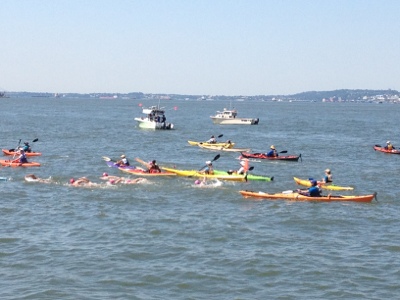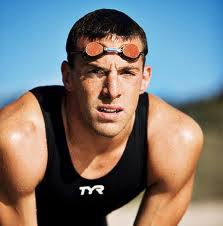-
Join 39 other subscribers
Categories
-
Recent Posts
Events
Helpful Swim Links
OW Swim Links
Race Reports & Results
Training
Archives
 Subscribe to Open Water Swim RSS feed (click orange box)
Subscribe to Open Water Swim RSS feed (click orange box)- Summer of 2013 ocean swims
- Manhattan Island Marathon Swim
- Why is this woman smiling?
- Smith Mountain Lake Swim – Upcoming event
- Glossary of (pool) swim terms
- Chris Greene Lake: a first-timer primer
- Inaugural Seaport Swim (1/2 mile and 2 miles) – Washington, DC
- Pancake Pentathlon Swim Meet (San Diego)
- “Open Water Swimming” is bicoastal
- Swimming myths
Pages
April 2024 M T W T F S S 1 2 3 4 5 6 7 8 9 10 11 12 13 14 15 16 17 18 19 20 21 22 23 24 25 26 27 28 29 30
Author Archives: Caroline
Smith Mountain Lake Swim – Upcoming event
Info to know: Both the Saturday 5K and Sunday 1-miler are open to youth and masters swimmers. There is also a 1/2-mile swim on Sunday for 9-and-under swimmers. This swim is also wetsuit legal. There does not appear to be a separate wetsuit category.
Date: September 24 & 25
Location: Mariners Landing at Smith Mountain Lake, 1245 Graves Harbor Trail, Huddleston, VA 24104
Events: 5K swim Saturday, 1 mile swim Sunday, 1/2 mile swim Sunday for youth 9-and-under. There are age-group categories for both the 5K and 1 mile.
Website: http://www.summitgroup.us/sml/
Glossary of (pool) swim terms
If you’re new to competitive swimming, then the whole insider language can seem intimidating. There are a lot of people in masters swimming who grew up on swim teams, but while I had enough in the way of informal lessons and swimming experience as a child to be a solid, competent swimmer as an adult, I’d never participated in a swim team in my life when, pretty much out of the blue, I took up open water distance swimming at 45. What did I know from descends and negative splits?
Today I came across a helpful glossary of terms via the Mountain View Masters web site.
Now if someone could just explain exactly HOW you descend (I mean really — “descend :02 on each 100.” Seriously, are there swimmers who have such minutely calibrated sense of pace that they can do that?).
Posted in Caroline, General swim info, OW Training
Tagged masters swimming, open water swimming, swim glossary, swim training
Chris Greene Lake: a first-timer primer
Here’s a quick primer on the Chris Greene Lake Swim for those of you who will be swimming it for the first time this year:
The event: 1- and 2- Mile lake swim at Chris Greene Lake outside Charlottesville, VA. Chris Greene regularly serves as the USMS National 2-mile Cable Swim Championship, but even in a non-championship year, should you set a national record, it counts.
The Course: The setting is a small lake in a public park, so this is one open water race where you don’t have to worry about extraneous conditions like wind or waves affecting your swim. However, if you’re from a land of crystal-clear lakes or sparkling ocean waters, know that the water here is the same murky greenish-gold of every other Virginia open water venue. It’s perfectly nice, clean, spring-fed water; that’s just the way you get it in VA. You’ll see your arm in front of your face and that’s about it.
The course is a precisely measured 440 yards, marked by a rope stretched between posts and floated by small buoys. (The header photo for this blog is from the Cable Swim.) You swim down one side of the rope and back on the other (which means an about-face turn at each end)—2 complete loops for the 1-mile swim and 4 for the 2-mile. Waves of ten, seeded by 1650 time, are sent off in 30-second intervals. The finish is at the same end as the start, between two inflatable buoys.
USMS sanctioned event? Yes, so you’ll need a US masters swimming license to participate.
Wetsuit legal? No
Qualifying time/swim required? No, but you do have to be able to complete the 1 mile within an hour or the 2 mile within 2 hours. You seed yourself in your race entry form by entering your 1650 time.
Novice-friendly? Yes. With a sheltered lake setting, small wave starts, comfortable water temperature and relatively easy sighting, this is a great swim for first-timers, but year after year it also attracts seasoned veterans at the top of their form as well.
What you have to contend with: The water can be quite warm–expect from the high 70s to low 80s. Other than that, about all you have to worry about is the occasional floating weed and the possibility of a rope burn from getting too close to the cable. You might also want to keep in mind that the hard-core swimmers treat CGL like a sustained sprint; if your 2 mile time is in the 55-plus-minute category, expect to be lapped.
A word on sighting: Before my first Chris Greene, I figured having a cable to follow would make sighting a cinch. Kind of like a lane line, right? So the first two years I swam it, I couldn’t figure out why I kept finding myself ten feet off the cable on one leg and blundering into it on the other. Then someone told me that the cable is not quite straight. It curves very slightly inward as you swim along the beach side, and therefore bows out just a bit on the lake side. Last year I switched my strategy to sighting forward along the cable, and this proved a more effective strategy for swimming a reasonably straight line. Some people seem to have mastered the knack of hugging the cable coming and going; whatever their secret is, I haven’t figured it out yet. At any rate, sighting is definitely easier in this than in pretty much any other OW race I’ve entered, but you’ll still have to sight forward.
Nice features: This is an extremely well run and, even in a championship year, very friendly, low-key event. Chris Greene Lake features a pleasant sandy beach, plenty of parking, and a bath house with running water (including cold-water outdoor shower). Good post-race food and friendly people too.
Web site: CableSwim.org.
And a final tip on buoy turns: You do a 180 around a slippery wooden pole at each end. There are a variety of strategies on display, and you can always just kind of paddle around it; any way you slice it, the turn is a momentum-killer so your goal is just to lose the least amount of time possible. This spring, the USMS Swimmer magazine had an article (with pictures) on buoy turns. The technique is illustrated in the video here, although you’ll have to roll through another 90 degrees at Chris Greene (one more spin?) I tried this turn technique at my last race, however (which was a 90-degree turn) and it worked pretty well.
Swimming myths
 Turnover vs. distance per stroke? Bilateral vs. one-sided breathing? And is there one ideal pacing strategy? Courtesy of Alexandria Masters Swimming, consider these Swimming Myths (and truths).
Turnover vs. distance per stroke? Bilateral vs. one-sided breathing? And is there one ideal pacing strategy? Courtesy of Alexandria Masters Swimming, consider these Swimming Myths (and truths).
Posted in OW Training
More on the circumstances surrounding Fran Crippen’s death
Christine Jennings, who also swam in the 10K in which Fran Crippen died, spoke to the Washington Post about race conditions and her own experience, suggesting that both the warm water and a lack of race support likely contributed to Crippen’s death:
The other American, Christine Jennings, said she vomited several times in the water. Jennings, 23, got dizzy and veered off course. Fearing she would black out, she turned over and swam on her back with an arm in the air to signal her distress to the safety boats that are supposed to follow the swimmers in such races.
But when no one responded, Jennings struggled to the finish, where she staggered out of the water with the help of a fellow swimmer and was taken to a hospital.
“It was a disaster,” she said. “I’m floating on my back for several minutes, thinking ‘Why isn’t anybody checking on me?’ “
Jennings said she noticed a referee’s boat and several people on jet skis before the race, but not as many as typically patrol the water given swimmers’ vulnerability to extreme temperatures, jellyfish stings and other problems. U.S. teammate Eva Fabian, 17, rode in the same ambulance as Jennings to the hospital; both were treated for dehydration and heat exhaustion.
The Post also reports that, according to Crippen’s family, “On a death certificate sent Sunday night from the United Arab Emirates, heat exhaustion and drowning were listed as the causes of Fran Crippen’s death.”
In the LA Times, physician and swimmer Larry Wiesenthal said that “having a 10k (2 hour) race in 86 degree water is criminal.” Wiesenthal explained that dehydration, more than heat, would have been the greatest concern in this race. A swimmer competing at race pace in 86-degree water would sweat profusely, he noted.
With swimming in warm water, you are killed not by heat stroke but by dehydration. More sinister than in running, where you are upright and you’ll faint/pass out in relatively early stages of dehydration, with swimming you are already lying down and can maintain blood flow to your brain. So you won’t pass out until you are so dehydrated that you essentially go into frank shock, with total circulatory collapse.
Could Crippen could have been saved had he been pulled from the water immediately upon collapse and received emergency medical care? It may be impossible to know for certain. However, Jennings stated that she tried to signal for help but that her efforts went unnoticed. Many people have asked whether FINA needs to establish an upper limit on water temperatures, but race support seems to have been just as important an issue in this tragedy.
OW world mourns Fran Crippen’s death
Update: An AP story quotes the 10K winner, Thomas Lurz, arguing both that the water was too warm for racing and that there was insufficient in-water support.
The news of Fran Crippen’s death during a 10K World Cup race in the United Arab Emirates has stunned and saddened the OW community, with wide speculation that high water temperatures (as high as 86 or 87 degrees F) were likely a significant contributing factor. (Several other swimmers were treated for exhaustion and deyhdration.) UAE swimming officials are reporting that he “died from overexertion,” which isn’t really saying anything.
Crippen failed to finish the race, which apparently was the first point at which anyone realized he was missing. (His body was found by divers two hours later.) Which makes me wonder what kind of in-water support the race was running. This wasn’t a mass-start triathlon with hundreds of swimmers in the water. Were there enough support boats and rescue personnel on hand to monitor the swimmers?
There will certainly be many questions about whether Crippen’s death might have been prevented. Already several sources have pointed out that FINA has a minimum, but no maximum, temperature limit for OW races. Fingers will be pointed, blame will be thrown about. At 10KSwimmer, however, Steven Munatones offers a moving tribute to the person and the swimmer.
Per her USA swimming bio (long version), Eva Fabian (phenomenal young OW swimmer–she won the 5K at the 2009 Open Water National Championships and then in July 2010 won the women’s World Open Water 5K) trains 15,000 – 20,000 yards each day, 6 days a week. Set your training goals, kids!




